Back Pain Can be Challenging – Could a Herniated Disc be the Culprit?

Relieve Your Back Pain with the Help of Physical Therapy!
If you’ve had back pain, it could be due to a herniated disc. The herniated disc can put extra pressure on the muscles and nerves around the spinal column.
According to The National Institute of Health, “The highest prevalence [of herniated disc cases] is among people aged 30-50 years, with a male to female ratio of 2:1. There is little evidence to suggest that drug treatments are effective in treating herniated discs.” This is especially important because so many people try to lean on medication for relief, creating other health problems for themselves.
Symptoms of herniated discs may include pain on one side of the body, pain that spreads to the arms or legs, aching, burning sensations in the affected area, and pain with certain movements.
Are you experiencing any of these symptoms? If so, contact Balance In Motion Physical Therapy to see if a herniated disc is the culprit of your back pain, and discover how we can help you find relief.
How can physical therapy help relieve herniated discs?
Physical therapy plays a critical role in the recovery from a herniated disc. Your physical therapist will use different techniques for pain relief and healing through passive and active treatments. Certain methods such as deep tissue massage, electrical stimulation, and heat and ice therapy are just a few examples of passive treatments.
Deep tissue massage uses pressure to relieve spasms and tension due to herniated discs. Heat therapy increases blood flow to the affected area and improves healing, while ice therapy reduces inflammation of the body. Electric nerve stimulation reduces muscle spasm by sending a tiny electrical current to the nerve pathway.
Active physical therapy treatments address joint movement, stability, flexibility, strength, and posture. Your physical therapist will teach you core stabilizing exercises to strengthen your back muscles and will also guide you through body muscle exercises to strengthen and condition your body. In addition, your physical therapist will teach you flexibility techniques and proper stretching techniques.
In fact, as stated by SpineUniverse,
“Physical therapy often plays a major role in herniated disc recovery. Its methods not only offer immediate pain relief, but they also teach you how to condition your body to prevent further injury.
There are a variety of physiotherapy techniques. Passive treatments relax your body and include deep tissue massage, hot and cold therapy, electrical stimulation (eg, TENS), and hydrotherapy.”
If you are experiencing pain in your back, turn to physical therapy for help. Your physical therapist will perform a comprehensive exam and review your medical history to determine if you have a herniated disc. Once a proper diagnosis is made, your physical therapist will develop and implement a personalized treatment plan for the affected area.
Herniated discs, defined
The spinal column consists of a series of bones. The cervical spine has seven bones, the lumbar spine has five bones, and the thoracic spine has 12. Each disc has a gelatinous inner section and a tough outer ring. When the disc protrudes through the outer ring, it is known as a herniated disc. This can lead to numbness, pain, and discomfort.
There are a number of factors that could cause a herniated disc. Certain movements, such as turning or twisting, can cause a herniated disc. The lifting of heavy objects is another culprit, as is added weight on the back joints. This is because the discs need to support more weight.
Older people are at risk for herniated discs, because as we age, the discs begin to lose some of their protective water content. This causes the disc to slip out of place more easily.
Some other common symptoms of herniated discs that you may experience include:
- Weakness in the legs
- Pain when bending or twisting
- Pain that intensifies when sitting, coughing, sneezing, or bending
- Burning, numbness, or tingling in the back, buttock, legs, and/or feet
Discover back pain relief today
The goal of physical therapy is to help you achieve an active and pain-free life. It has helped thousands of others, and it can help you, too!
Physical therapists are professionally trained to evaluate your condition and provide the correct exercises to meet your needs. Most of the exercises they will teach you can be done on your own at home as well, so you can continue treatment outside of appointments.
Get on the road to herniated disc recovery with physical therapy!
